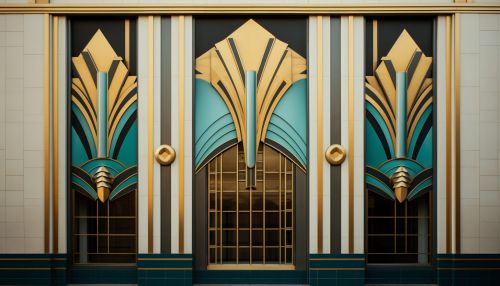Art Deco
Origins and Influences
Art Deco, a popular design style of the 1920s and 1930s, is characterized by bold geometric shapes and strong colors. The style originated in France before World War I and gained international prominence after the 1925 Paris Exposition. Its influences can be traced back to various styles and movements including Cubist, Futurist, and Constructivist art.


Characteristics
Art Deco is distinguished by its emphasis on geometric forms, including zigzags, chevrons, and stylized floral motifs. The style often incorporates expensive materials such as ebony, marble, and rare woods, as well as new materials like chrome and glass. It is also characterized by its use of symmetry and repetition, and its combination of traditional craft motifs with Machine Age imagery and materials.
Architecture
Art Deco had a significant impact on architecture, with many buildings from the period featuring its distinctive style. Notable examples include the Chrysler and Empire State buildings in New York City, and the Palais de Chaillot in Paris. These buildings are characterized by their streamlined, geometric design and their use of decorative elements such as friezes and bas-reliefs.
Decorative Arts
In the realm of decorative arts, Art Deco influenced the design of furniture, jewelry, textiles, fashion, and industrial design. The style was often used to convey luxury and sophistication, with a focus on craftsmanship and quality materials. Notable designers of the period include Eileen Gray, René Lalique, and Jean Dunand.
Influence and Legacy
Art Deco had a profound influence on the design world and continues to be a source of inspiration today. Its influence can be seen in the design of many modern buildings and objects, and the style is often used in graphic design, fashion, and interior design. Despite its association with luxury and opulence, Art Deco also had a significant impact on mass-produced consumer goods, helping to bring modern design to the wider public.
